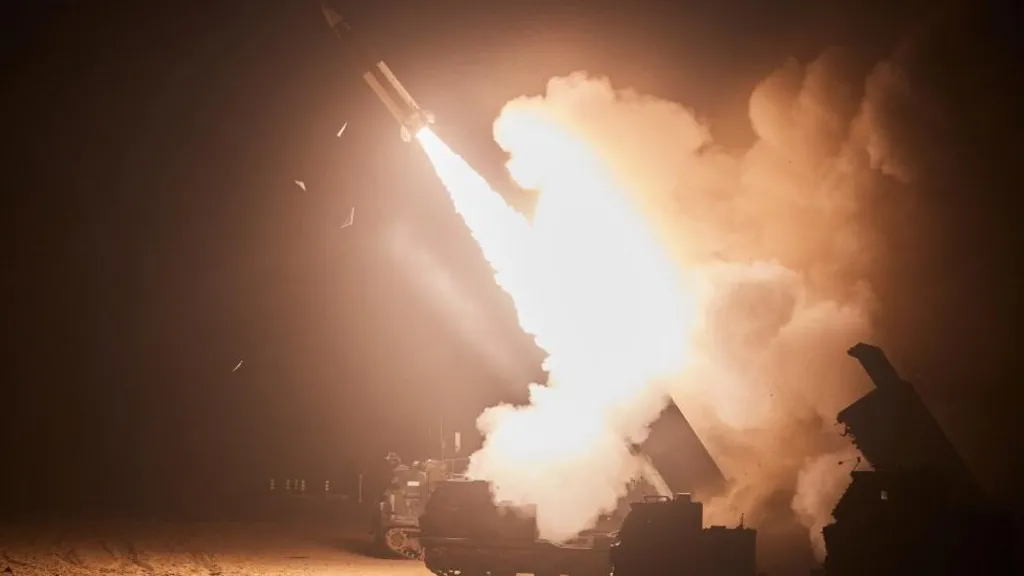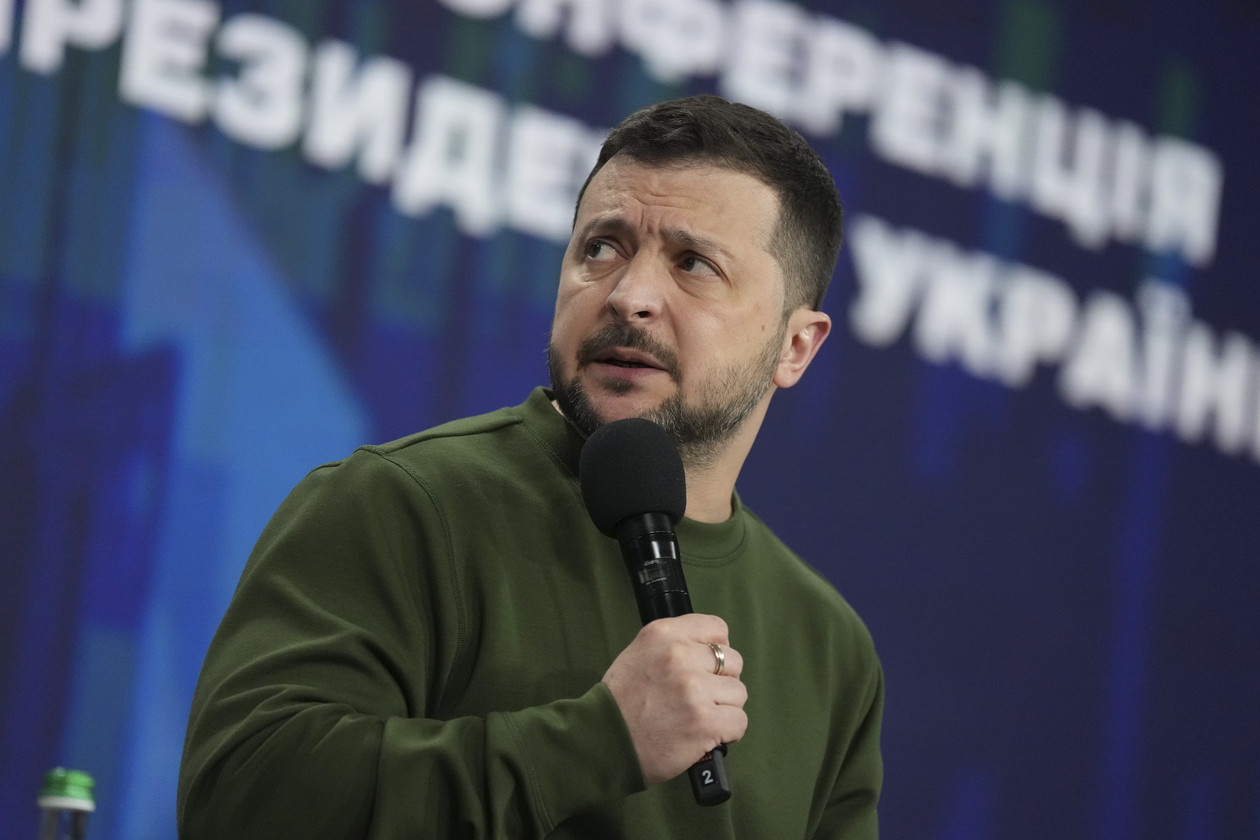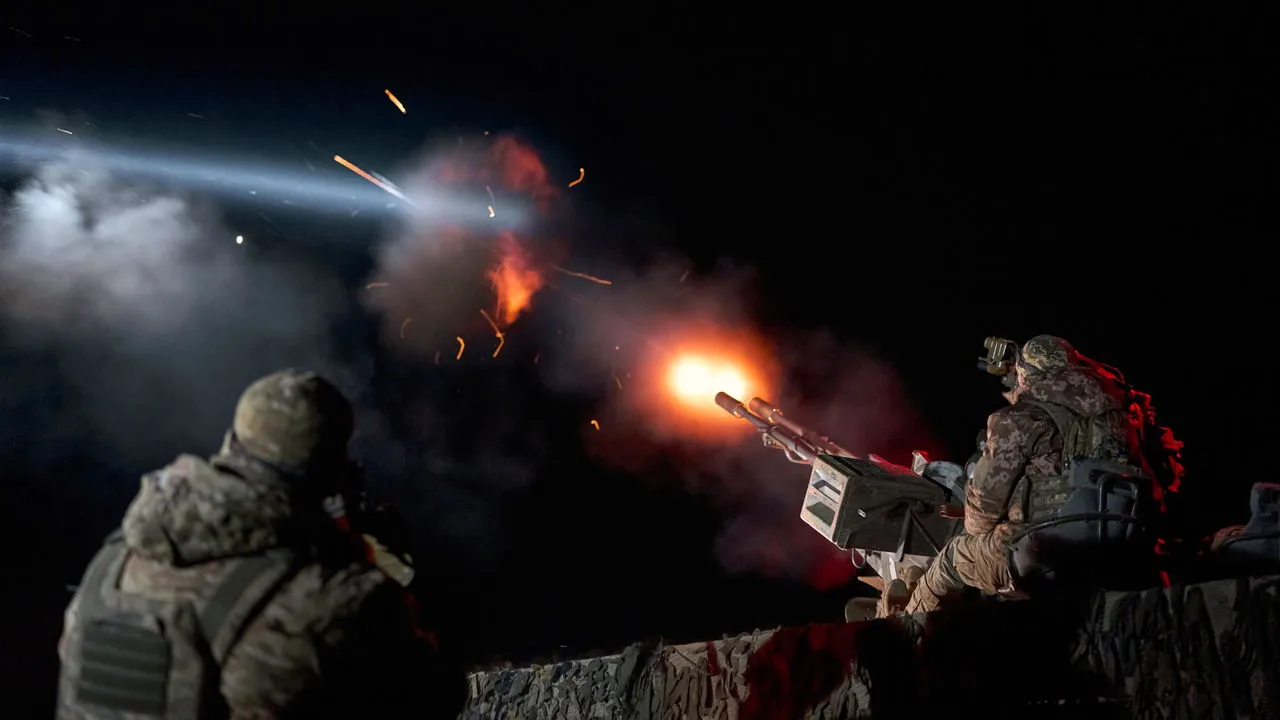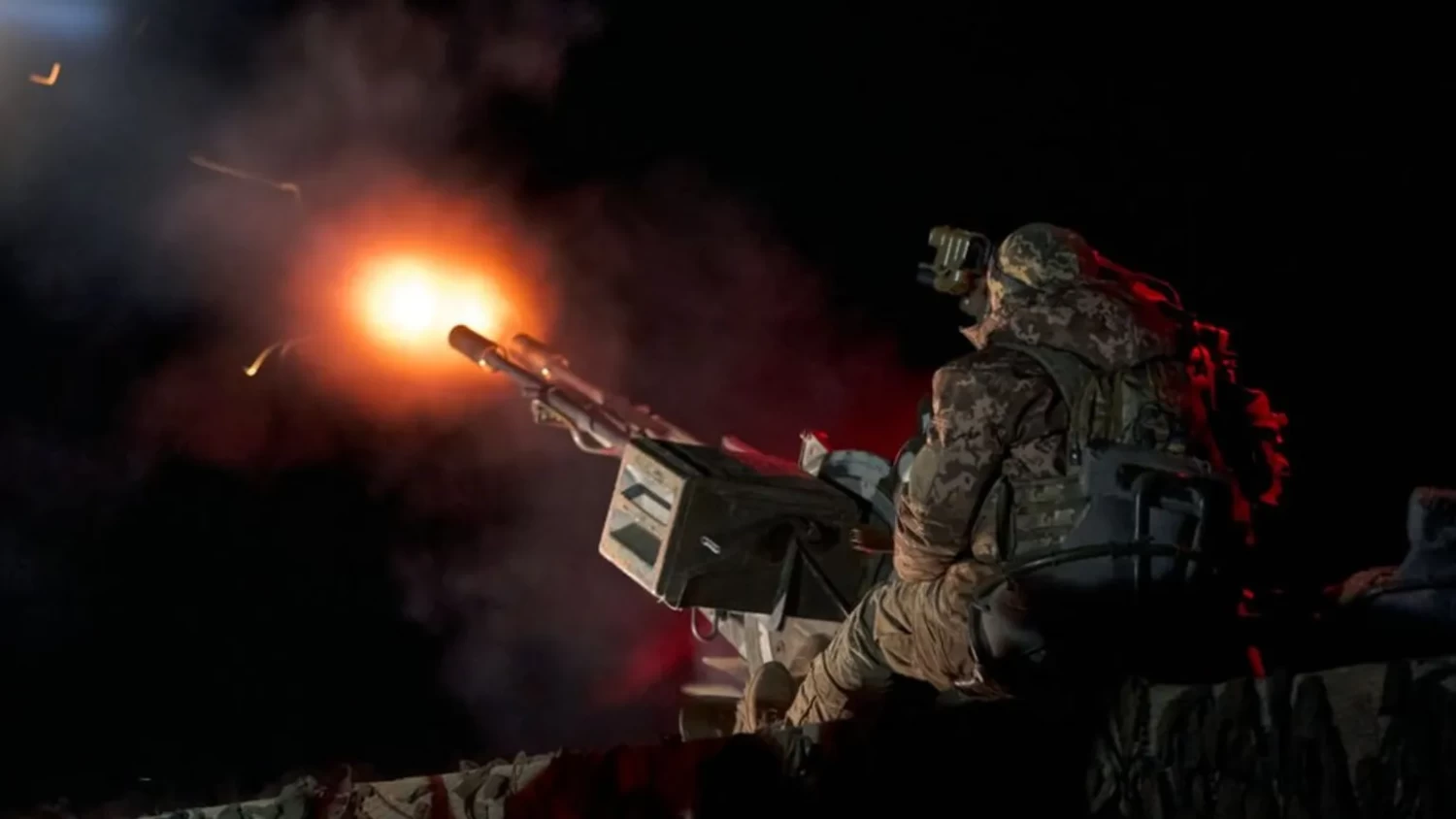This article is more than
2 year oldWorld Millions of Ukrainians fled the war, but many wound up in what they consider 'enemy territory'
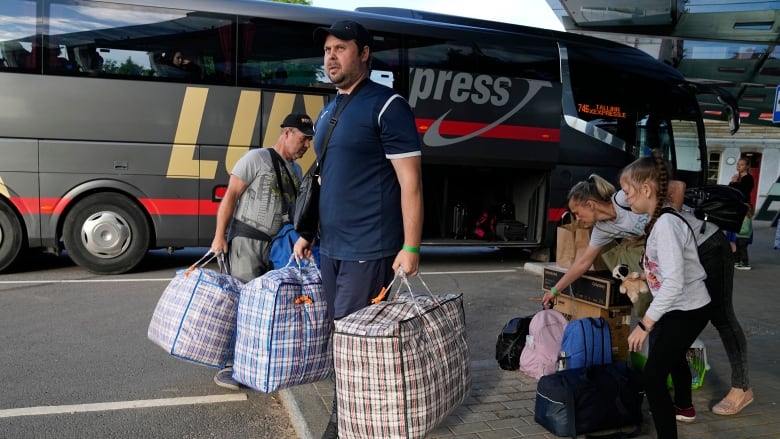
The border crossing at Narva, Estonia, is only a few hundred meters long, but for the roughly 100 Ukrainian refugees who officials say still still pass through it everyday, it is the culmination of lengthy journey. This includes not just fleeing a war zone, but travelling through Russia, a vast country that many Ukrainians view as enemy territory.
The estimates for how many Ukrainians have ended up in Russia since the invasion vary. Russia claims more than 2.4 million have been welcomed as part of a humanitarian mission, whileUkrainian officials say 1.2 million of its citizens have been forcibly deported to Russia or Russian-occupied territory, like Crimea, since the end of February.
In July, the U.S. State Department concluded that between 900,000 to 1.6 million Ukraine citizens have been forcibly deported to Russia. According to researchers with Human Rights Watch, there have been reports of refugees being threatened, aggressively searched and held against their will at several detention centres known as "filtration camps."
"We went through enemy territory," said Dariya, who is from Kherson Oblast and had to travel through Russia-annexed Crimea to eventually make her way to Estonia.
"We spoke Russian on purpose in order not to draw attention to ourselves, because we do not know how the situation is."
In many cases, after going through checkpoints, Ukrainians were put on buses and trains and taken to 55 regions across Russia. Many chose to get on the vehicles and head west because there was little choice when it came to fleeing Eastern Ukraine.
Here are some of their journeys.
'Miraculously we survived'
Igor, 49, is a retired worker from the Azovstal Iron and Steel Works: the same fortress-like plant in Mariupol that gained international attention this spring as Ukrainian units, including the Azov Regiment, defended it for three months before surrendering in May.
Igor tried to escape Mariupol with his family on March 17, but it took months for them to reach the EU. As the city first came under siege at the end of February, Igor, who asked to be identified only by his first name for his safety, said he sheltered in the basement of his apartment building along with his wife and two children.
The building came under heavy attack. He said he knows of at least two of his neighbours who died. Video of his home was posted online, and it showed his building partially collapsed and completely blackened by explosions.
"Miraculously we survived," he said. "Then for another week we hid in the basement of the next house."
At that point they decided they had to get out, he said, and as there were no safe corridors to the east, they were forced to go toward Russia.
But as they were leaving the city, Igor and his family were stopped at a Russian checkpoint. When the soldiers discovered a tattoo of a Ukrainian trident underneath a ring on this left hand, he said he was taken into custody, and his family refused to leave Mariupol without him.
The trident is a symbol of Ukraine and associated with the country's military. He said he got the tattoo when he was serving in in 1991. According to Ukrainian refugees and video posted by Russia's own state media, Russian soldiers frequently check for tattoos as they are looking for military affiliations, and any symbols which the government says it associates with "Nazism."
From fleeing, to detention
Igor wouldn't elaborate on what exactly happened while he was detained, but he was questioned. He said he was taken to a number of detention centres before being sent to a military barracks in Russian-occupied Donetsk, where he slept on the floor on a wooden pallet. He said that government workers and volunteers with Ukraine's territorial defence unit were in custody alongside him.
"There was no way I could contact my family," he said. "I couldn't get in touch and they didn't even know where I was."
Igor spoke to CBC News on Aug. 31 in Tallinn, Estonia, where he is now staying on a cruise ship with 1,800 other Ukrainian refugees. At one point during the interview, he took off his ring to show a maimed patch of skin underneath.
While in custody, he grabbed a piece of coal from a potbelly stove used for heating, he said, and he pressed it to his skin. He was trying to burn off his tattoo so no more Russian soldiers would see it.
The blue outline of the trident is still partially visible.
Igor was released after 30 days, but he said the Russian soldiers kept his passport. All he was given back was a photocopy with a stamp from the so-called "Donetsk People's Republic." The self-proclaimed separatist government, backed by Russian forces, has been running an occupied area of Eastern Ukraine since 2013, but remains unrecognized by most of the world.
Once Igor was back in Mariupol, he and his family got on a bus going to Taganrog, Russia, and when they arrived, his daughter connected with volunteer groups on social media offering to help.

A non-profit organization called "Helping to Leave" helped them with accommodation and transportation, but when his family tried to cross the Russian border into Estonia in May, he said the border guards wouldn't let him out because he didn't have his passport.
He and his family tried another route. They headed south and were able to leave via Belarus, before finally crossing into Latvia and then Estonia.
"I breathed a good sigh of relief," he said. "I didn't think I would get out of there."
The four of them are currently sleeping on bunk beds in a room on the cruise ship in Tallinn. They would like to settle in Estonia, he said, and his children have registered for school, while he is looking for work.
'There are some people who hate us'
Researchers with Human Rights Watch say there is no public data around how many Ukrainian refugees have remained in Russia, but Natalya, and her daughter, 17, are among a group who have decided to stay, at least for now.
Natalya, who also asked only to be identified by her first name for her safety, spoke to CBC News from Ryazan, Russia, which lies about 200 kilometres south-east of Moscow.
She, too, fled Mariupol after spending three weeks in a bomb shelter along with several other families.

On March 23, after the building next door was hit, she said she and others started to run.
"People were in panic," she said. "People were even stepping over corpses."
She said she then met a group of Chechen soldiers who gave them some bread and showed them what road to take. They walked down to the coast, and started heading west along the Sea of Azov. She said when she turned around to look behind her, all she could see was her city on fire.
She estimates they walked for 15 kilometres before a bus picked them up.
WATCH | Why some Ukrainians are choosing to go back home:
Despite the risks, some Ukrainian refugees are returning to the war-torn country — each with their own reasons. They board trains headed east toward areas devastated by war, hoping to reclaim whatever’s left of their country.
When they eventually crossed the border into Russia, she said she felt a sense of relief. At a reception centre, they were given tea and sandwiches, but she said some Russians have been openly hostile.
"There are some people who hate us. They don't hide this."
Natalya decided to stay in Russia because she is unclear about what to do next, she said. She doesn't have a permanent place to live and splits her time shuffling between relatives and hostels.
"Everyone wakes up thinking of going home," she said. "We want to return to a peaceful life."
Choosing to enter Russia now
While the majority of Ukrainian refugees entered Russia in the first weeks after the invasion, others are fleeing now after living through the war for months.
On Aug. 30, CBC News visited a temporary hostel in Narva, Estonia, which was being used to house Ukrainian refugees. Dariya, 28, and Viktoria, 43, who also requested their last names not be published for their safety, recently arrived and were staying there along with their husbands and children.
The families, from Kherson Oblast, spent months living through explosions before they decided they had to leave. There are fears the fighting in the area could dramatically increase as Ukraine has signalled its launching an offensive to take the occupied territory back.
In order to leave the country, the two families headed south through Crimea, which Russia annexed in 2014. As they went through the checkpoints, Viktoria says they were careful to speak Russian and not Ukrainian.
Before they headed out, everyone in the group deleted photos and some contacts from their phones because they expected them to be searched, which they said they were. Their two husbands were taken aside, checked for tattoos and questioned.
While there is a ban on most men between the ages of 18 and 60 leaving Ukraine, men are able to leave via Russia. In its report, Human Rights Watch said that some of the Ukrainians they interviewed said they evacuated through Russia because it meant the whole family could leave together.
Dariya said her biggest fear was that the families would be separated or some of them could have their documents seized.
"You just understand that if something happens, I just have no way out, you have to stay in Kherson," she said.
When the guards asked where they were going, they replied St. Petersburg and didn't mention that they hoped to reach Sweden. Viktoria said they instructed them to register there and pick up Russian passports.
"It's like they are recruiting," Viktoria said. "It's like the banners they've put up in Kherson. Russia and Ukraine are one."
Keywords
Newer articles
<p>Chinese officials say they "firmly oppose" the platform being divested.</p>
TikTok ban now ‘inevitable’
Israel Iran attack: Damage seen at air base in Isfahan
Ukraine ‘will have a chance at victory’ with new US aid, Zelenskyy says
Who will be Trump’s VP? A shortlist
‘URANIUM’: Terrifying detail about Israel’s strike on Iran emerges
Ukraine war: Kyiv uses longer-range US missiles for first time
House passes potential TikTok ban that could speed through Senate
Taylor Swift broke Spotify record with new album
Caught between Israel and Iran, Jordan clings desperately to stability
